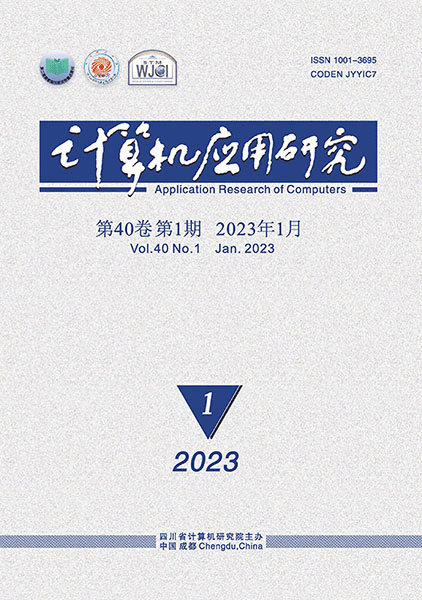Efficient routing protection method with linear time complexity
Efficient routing protection method with linear time complexity
1. a. School of Computer & Information Technology, b. School of Automation & Software Engineering, c. Institute of Big Data Science & Industry, Shanxi University, Taiyuan 030006, China
2. Dept. of Computer Science & Technology, Tsinghua University, Beijing 100048, China

摘要
How to deal with network faults efficiently and quickly is the basic requirement and main task of designing routing protocol. When dynamic routing protocols deal with network faults, a large number of packets are discarded during dynamic convergence. Therefore, at present, router manufacturers generally use routing protection methods to overcome network failures. Among many route protection methods, the DC(downstream criterion) rules is a generally recognized method. However, the time complexity of the existing DC rules algorithms is generally high, and the complexity increases rapidly with the increase of the average degree of network nodes. In order to deal with the above problems, this paper proposed a linear time complexity university routing protection scheme ERPLR(efficient routing protection method with linear time complexity). The method firstly proposed the backup next hop calculation rule, and then calculated the backup next hop for all source-destination node pairs based on the existing shortest path tree according to the backup next hop calculation rule. In the process of calculating the backup next hop, accessing each node and its neighbors at most once, so the time complexity of ERPLR is O(V+E). The experimental results show that, compared with the existing rules for implementing DC rules, ERPLR has similar results in four metrics: failure protection ratio and path stretch. Compared with DC rules, ERPLR reduces the computational overhead by about 74.93% and 78.91% in real topology and generated topology, respectively, this method can greatly reduce the calculation cost of DC rules.
关键词
基金项目
山西省应用基础研究计划资助项目(20210302123444)
中国高校产学研创新基金资助项目(2021FNA02009)
山西省重点研发计划资助项目(201903D421003)
国家自然科学基金资助项目(61702315)
国家高技术研究发展计划(863)资助项目(2018YFB1800400)
山西省高等学校科技创新资助项目(2022L002)
出版信息
DOI: 10.19734/j.issn.1001-3695.2022.11.0521
出版期卷: 《计算机应用研究》 Printed Article, 2023年第40卷 第6期
所属栏目: Technology of Network & Communication
出版页码: 1794-1800
文章编号: 1001-3695(2023)06-031-1794-07
发布历史
引用本文
耿海军, 张琪栋, 尹霞. 一种线性时间复杂度的高效路由保护方法 [J]. 计算机应用研究, 2023, 40 (6): 1794-1800. (Geng Haijun, Zhang Qidong, Yin Xia. Efficient routing protection method with linear time complexity [J]. Application Research of Computers, 2023, 40 (6): 1794-1800. )
关于期刊

- 计算机应用研究 月刊
- Application Research of Computers
-
刊号
ISSN 1001-3695
CN 51-1196/TP
《计算机应用研究》创刊于1984年,是由四川省科技厅所属四川省计算机研究院主办的计算技术类学术刊物。
《计算机应用研究》瞄准本学科领域迫切需要的前沿技术,及时反映国内外计算机应用研究的主流技术、热点技术及最新发展趋势。主要刊载内容包括本学科领域高水平的学术论文、本学科最新科研成果和重大应用成果。栏目内容涉及计算机学科新理论、计算机基础理论、算法理论研究、算法设计与分析、区块链技术、系统软件与软件工程技术、模式识别与人工智能、体系结构、先进计算、并行处理、数据库技术、计算机网络与通信技术、信息安全技术、计算机图像图形学及其最新热点应用技术。
《计算机应用研究》拥有众多高层次读者、作者,读者对象主要为从事计算机学科领域高、中级研究人员及工程技术人员,各高等院校计算机专业及相关专业的师生。多年来《计算机应用研究》的总被引频次及Web下载率一直名列本学科同类学术刊物前茅,所刊发的学术论文以其新颖性、学术性、前瞻性、导向性、实用性而备受广大读者的喜爱。
收录和评价
- 第二届国家期刊奖百种重点期刊
- 中国期刊方阵双效期刊
- 全国中文核心期刊(北大2023年版)
- 中国科技核心期刊
- 中国科学引文数据库(CSCD)来源期刊
- RCCSE中国核心学术期刊
- 中国计算机学会会刊
- 2020—2022年科技期刊世界影响力指数(WJCI)报告收录期刊
- 中国科技期刊精品数据库全文来源期刊
- 中国学术期刊综合评价数据库来源期刊
- 《中国期刊网》《中国学术期刊(光盘版)》来源期刊
- 2017—2019年中国国际影响力优秀学术期刊(自然科学与工程技术)
- 中国精品科技期刊顶尖学术论文(F5000)项目来源期刊
- 《中国工程技术电子信息网》《电子科技文献数据库》来源期刊
- 英国《科学文摘》(INSPEC)来源期刊
- 《日本科学技术振兴机构数据库》(JST)来源期刊
- 俄罗斯《文摘杂志》(AJ, VINITI)来源期刊
- 美国《艾博思科学术数据库》(EBSCO)全文来源期刊
- 美国《剑桥科学文摘(自然科学)》(CSA(NS))核心期刊
- 波兰《哥白尼索引》(IC)来源期刊
- 美国《乌利希期刊指南(网络版)》(Ulrichsweb)收录期刊





